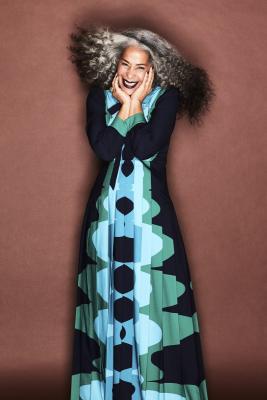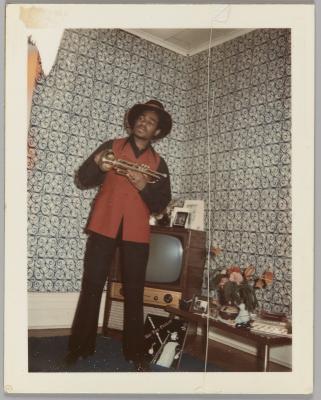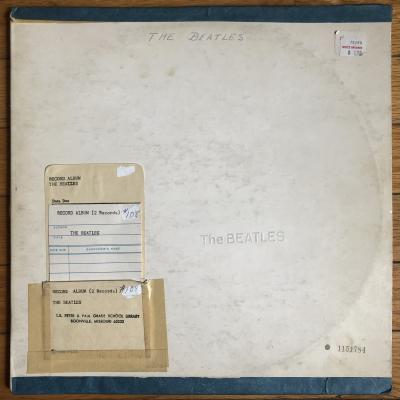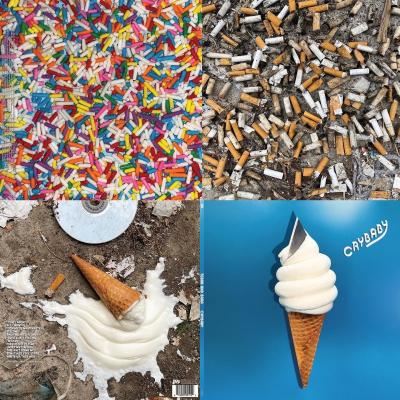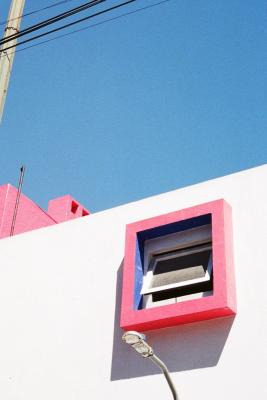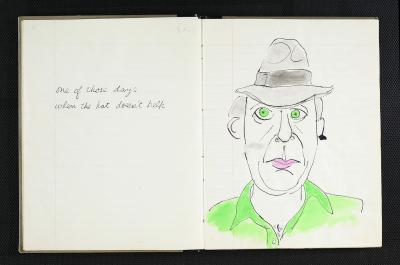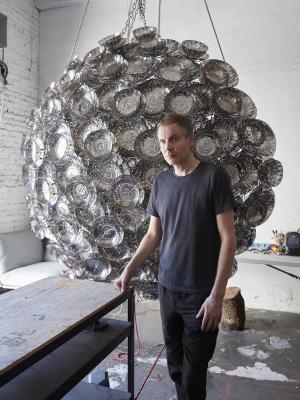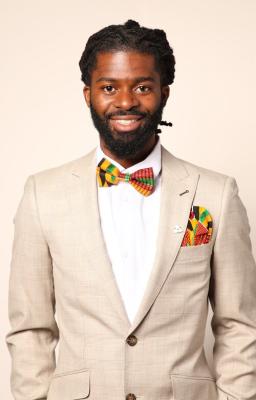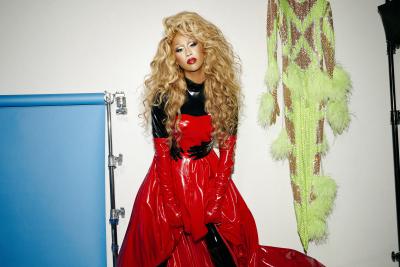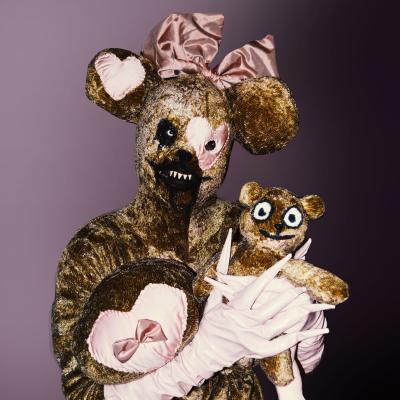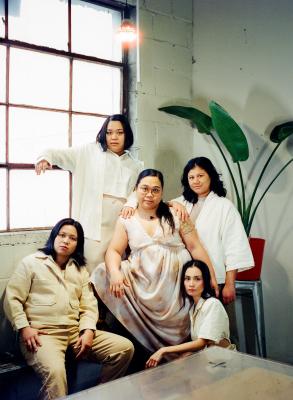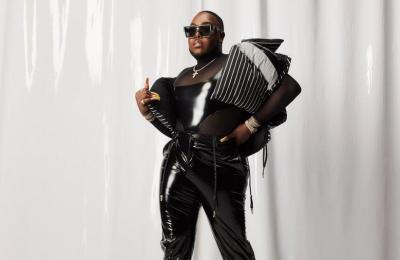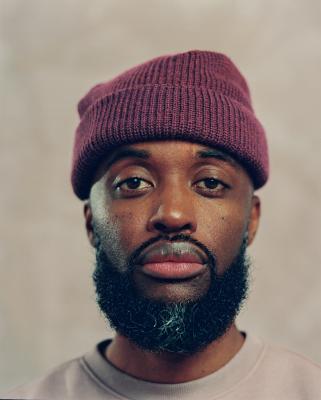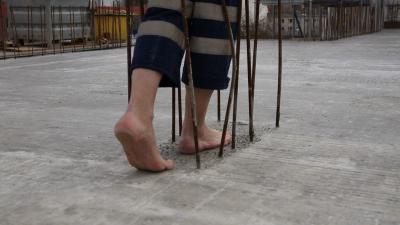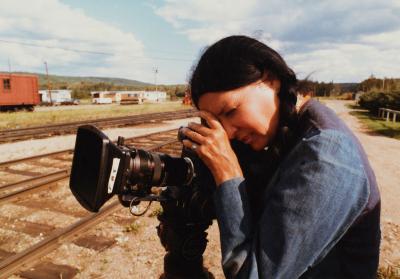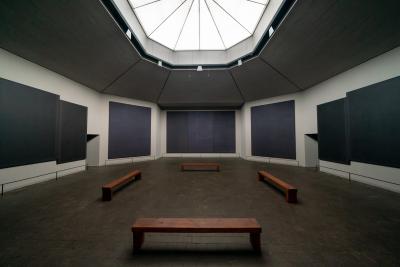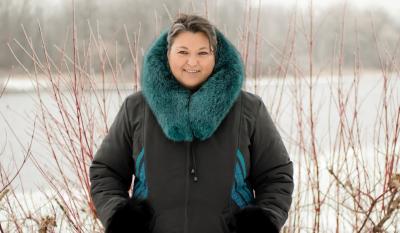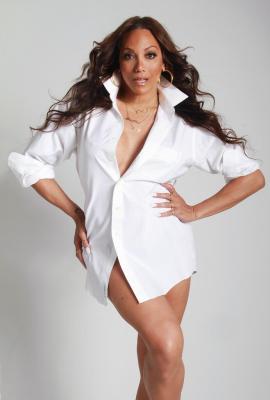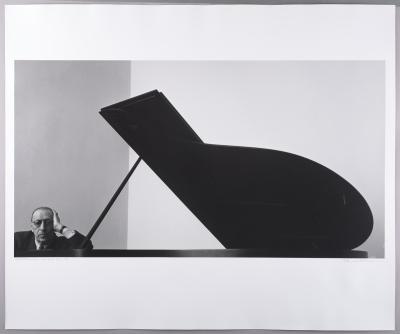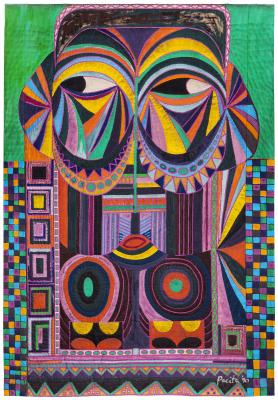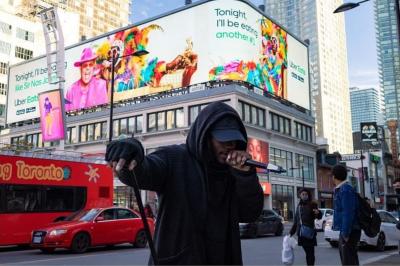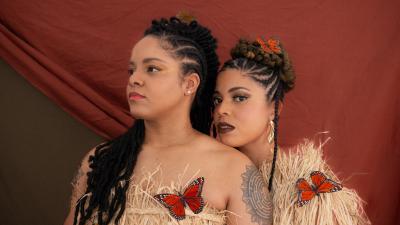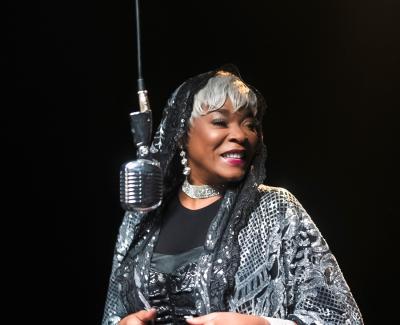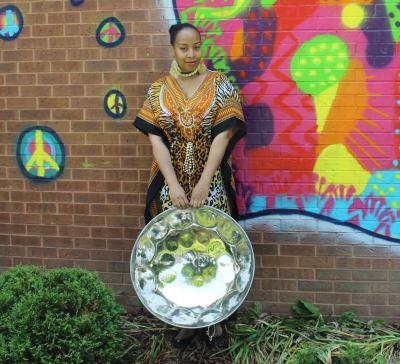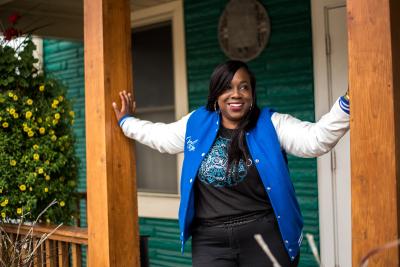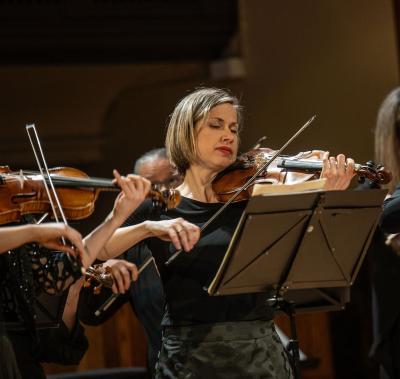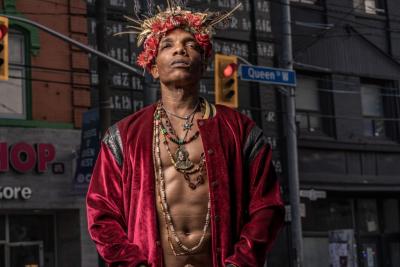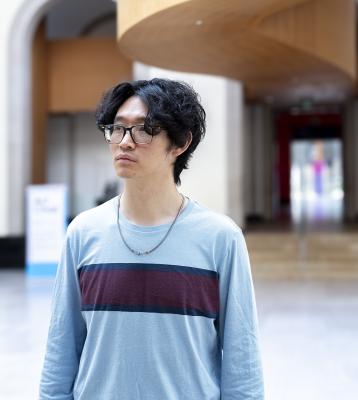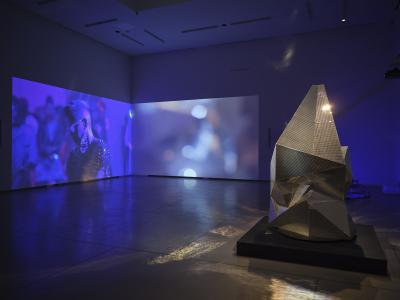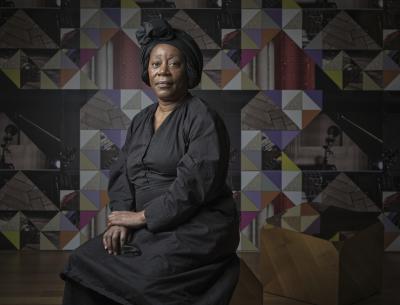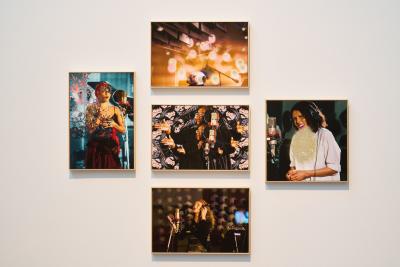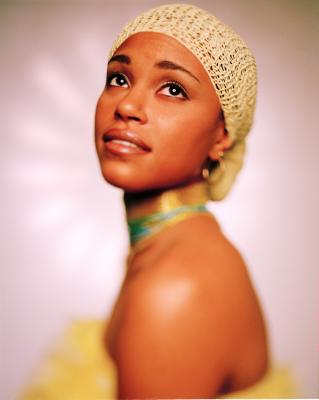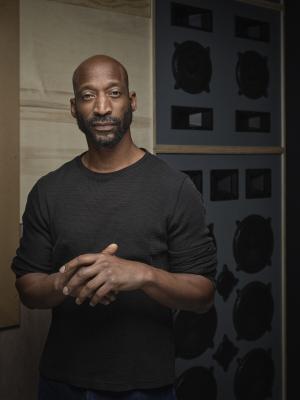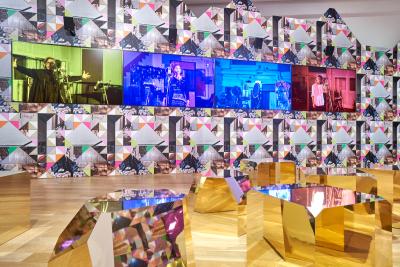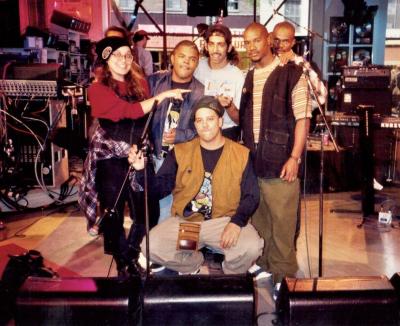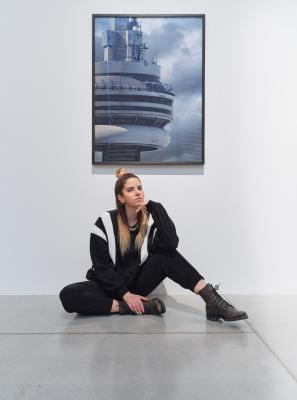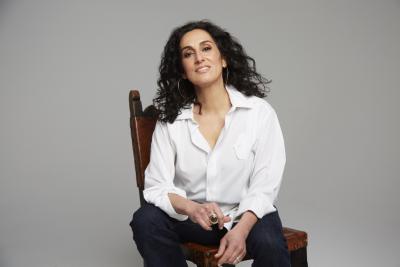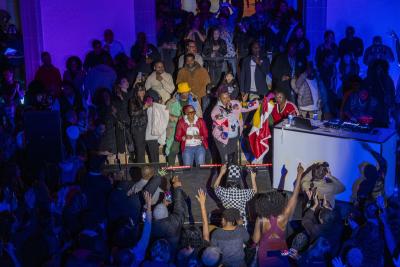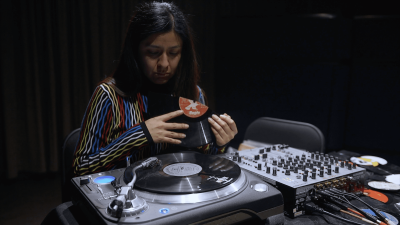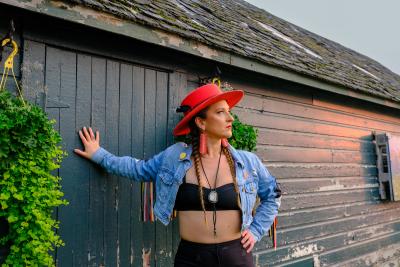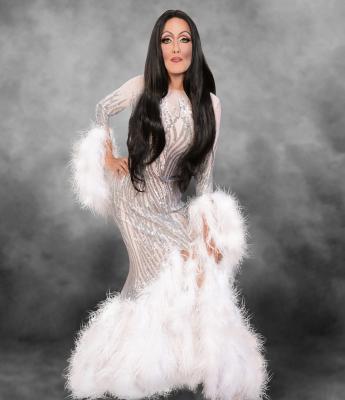Maria Chávez, The Abstract Turntablist
The New York-based sound artist brings her Dusk Soundscapes to the AGO on June 4 for Luminato.
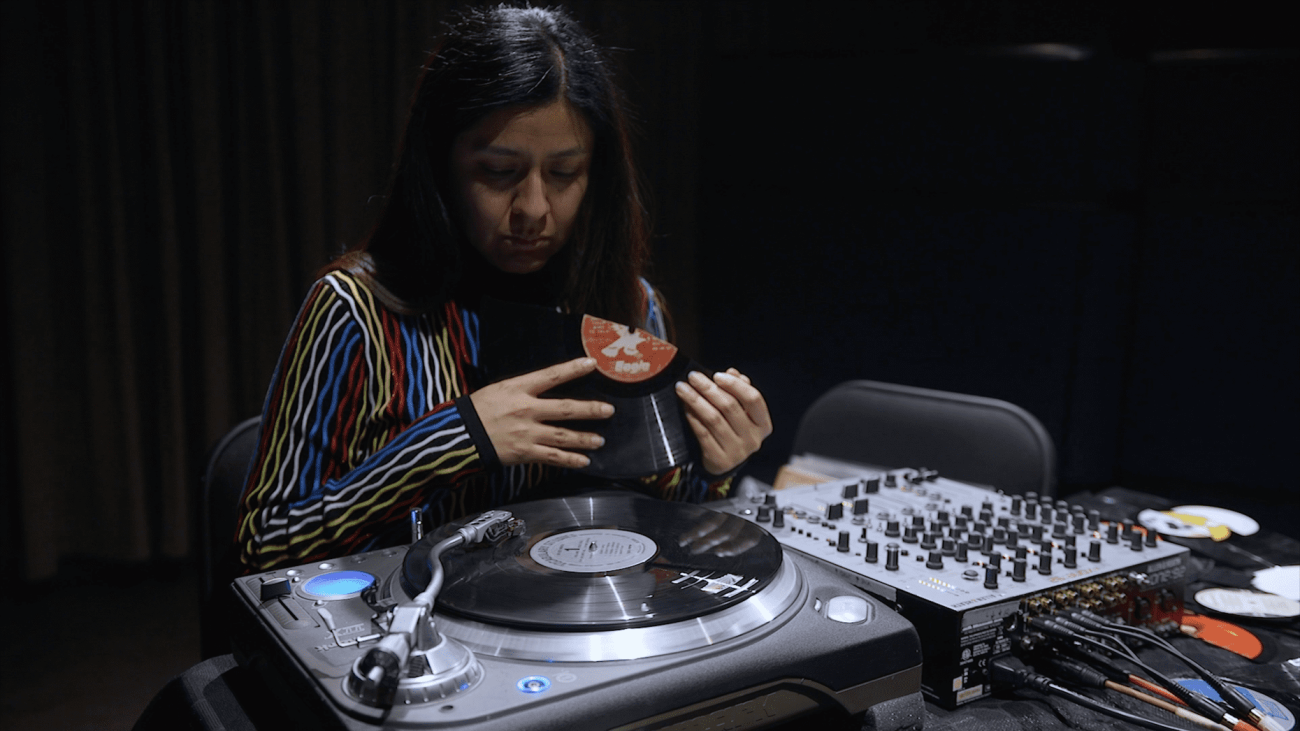
Image courtesy of the artist
Sound artist and abstract turntablist Maria Chávez began DJing as a teenager in the 90s. While hanging around record stores in Houston, TX sampling vinyl over the years, she developed a keen ear for the subtle imperfections often heard through the medium. Her exploration of the skips, pops and cracks of vinyl eventually blossomed into a sound art practice that sees Chávez perform at the helm of four double-needled turntables, taking crowds on an enigmatic journey through sound. Born in Lima, Peru, and based in New York City, Chávez is known for her multidisciplinary sound-based work, including improvised performance, sound art, marble sculpture and book objects.
For her performance at the AGO as part of Luminato Festival Toronto on Wednesday, June 4, Chávez will create a living soundscape that shifts and evolves as the sun sets over Walker Court. Using two turntables and two CDJs, Chávez will blend fractured records, ambient tones, and pulsing beats. As daylight fades, soft ambient sounds and crackling vinyl will fill the space, creating a meditative atmosphere. Then as night falls, she will transform the space into a celebration, inviting audiences to dance.
Before her performance at the AGO, Foyer spoke to Chávez about her history with vinyl and turntablism as well as what to expect from Dusk Soundscapes.
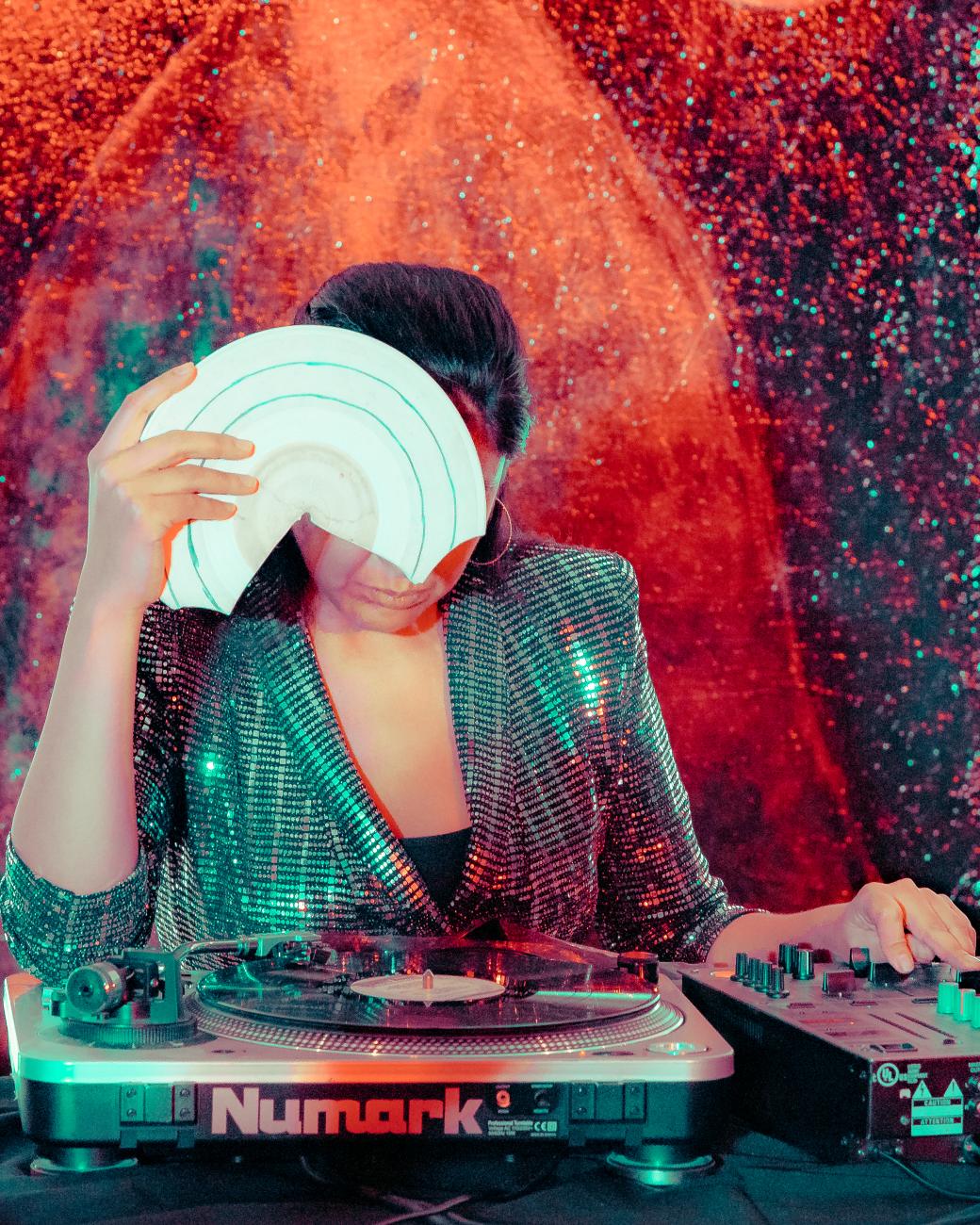
Image courtesy of the artist
Foyer: You’ve been DJing most of your life. How did your practice evolve into abstract turntablism and sound art? Can you share that journey with us?
Chávez: In the mid 90s, if you DJ’d professionally, there was only vinyl. That era of DJing was very fixated on hanging for hours in record stores, listening, and practicing at home after you got your selection. It was all very tactile, and sometimes, during those practice sessions, something would happen that would make the needle accidentally skip or do something unexpected due to the fragility of the machine.
One day, I saw a needle jump up from the record spiral and fall back down in a different part of the spiral but somehow it sounded seamless and interesting, yet no one noticed. I was the only one that saw it happen. I tried to recreate that moment. My ex-partner at the time – who was also a DJ – saw what I was doing, and it became a fairly big fight between us. That was the first time I saw the expanded possibilities from the material I was already working with.
The experiments continued and I kept getting yelled at for them to the point that I was kicked out for not stopping. Thankfully, that pushed me into the sound art world where I met David Dove. He was the director of the Pauline Oliveros Foundation and was teaching improvisation workshops in Houston. He welcomed me in to play with a group of musicians and artists and the rest is history.
You’re one of the only DJs in the world who uses a double needle. You even invented your own double needle with musician Randal Sanden Jr. Can you tell us the story of that needle, how it functions and what makes it – and your set up in general – so unique?
The Rake Double Needle was invented by Randal Sanden Jr. back in the early 2000s. Music producer King Britt gifted me the needle in 2016 after becoming aware of my work. A video of my work went viral with NPR back in 2018 where I used this needle. Randal Sanden Jr. saw the video and found me via thousands of comments on the video, and I was finally able to meet him. It was such a major moment because I was searching for him ever since King Britt gave me the needle. We connected and I asked him if he could make me a specialized double needle where one needle on the same head shell could be higher than the other, so it can read two different sizes of records on the same device. He tried it and it’s now called “the Stacker” and I use it all the time.
You’ve said that sound is the most democratic medium of art. Can you unpack that statement and share some of the specific reasons you feel that way?
Yes! I see sound as the most democratic medium within art mediums. For example, people who are deaf can FEEL sound. But it’s not possible to describe the colour blue to someone with vision loss without referencing an object.
There’s a part of the Louvre that is meant to share the works in the main collection to deaf and blind people. I’d rather have an art piece in that part of the museum than the main part.
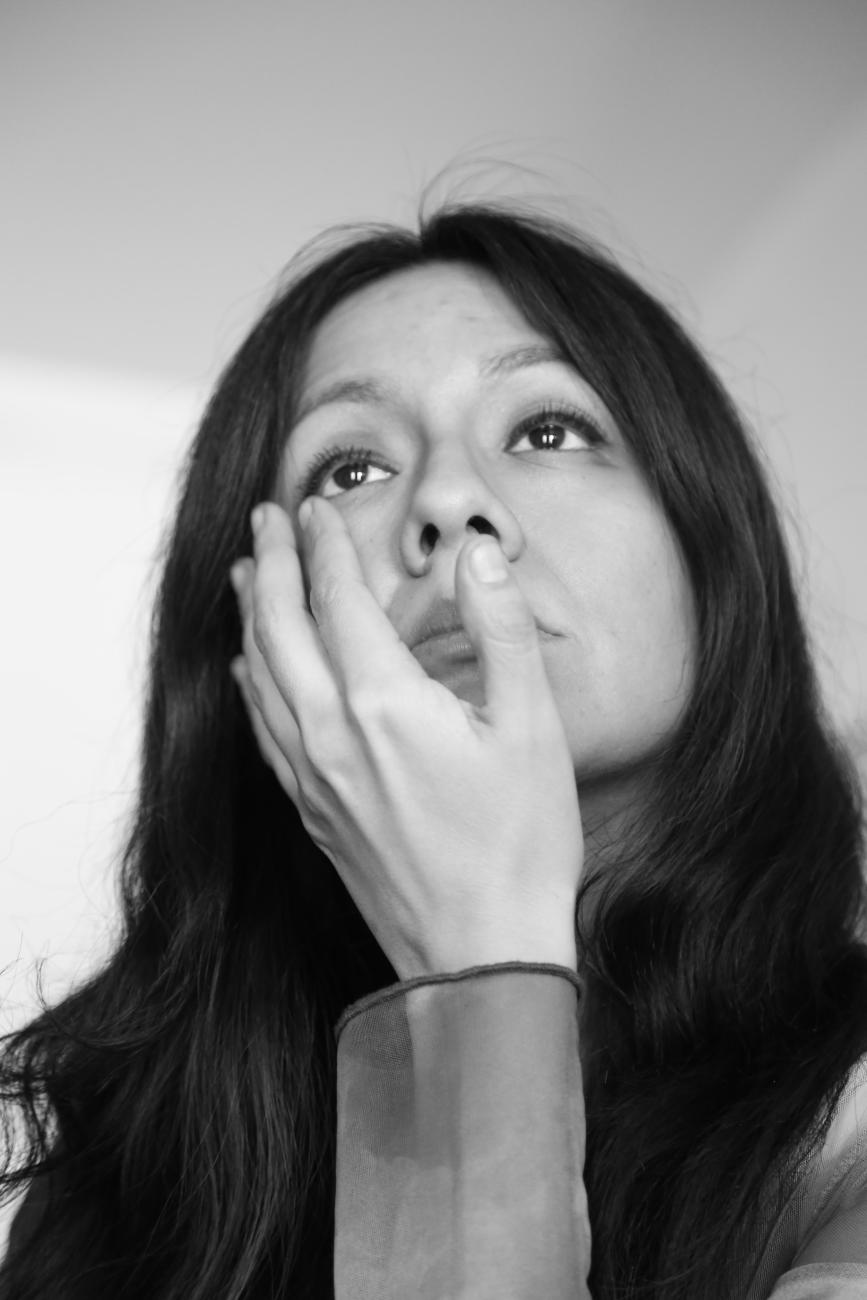
Image courtesy of the artist
Is the concept of Dusk Soundscapes something you developed exclusively for your performance at the AGO, or is it an experience you’ve offered audiences in the past? Without giving away too much, what are some things attendees can expect from your set?
It’s sort of both actually. I’ve performed the durational drone part of the idea in various programs and formats, but museums and art fairs haven’t given me space to meld my avant garde practice with my DJ work in the past. They always want one or the other with no room for creativity to bring them both together. But this is Luminato Festival! It’s clear that the energy of the fest is to encourage creativity so I’m excited and grateful that they were so open to my sharing both sides of my performance practice with everyone. It will start very environmental/experimental, sonically and then hopefully evolve into a space where people will be ready to dance, get their energy up and ready for the various amazing festival events!
Don’t miss Maria Chávez: Dusk Soundscapes, Wednesday, June 4 at 6 pm in Walker Court. This event is included as part of the AGO’s First Wednesday Night free admission program and Luminato Festival.

